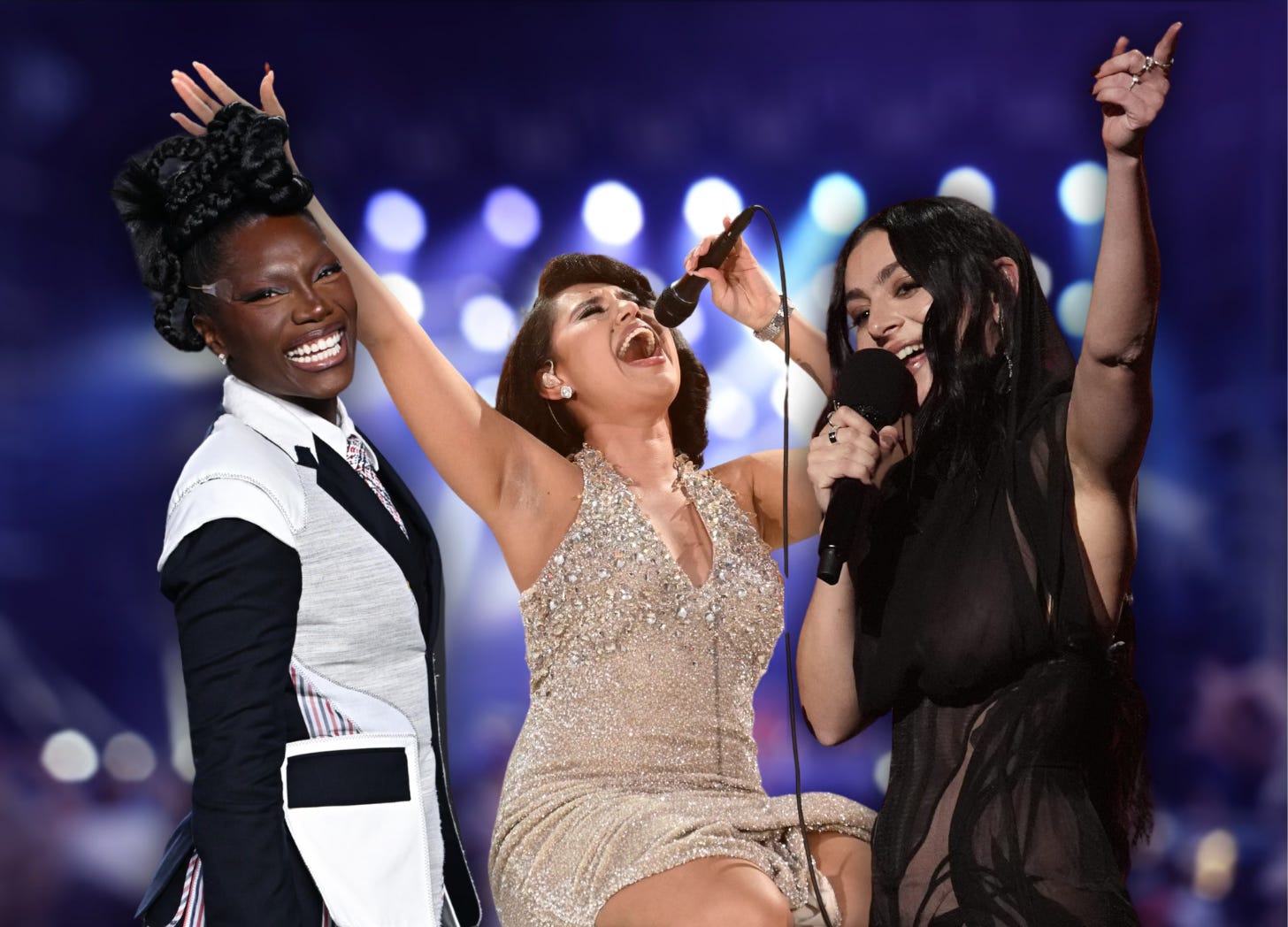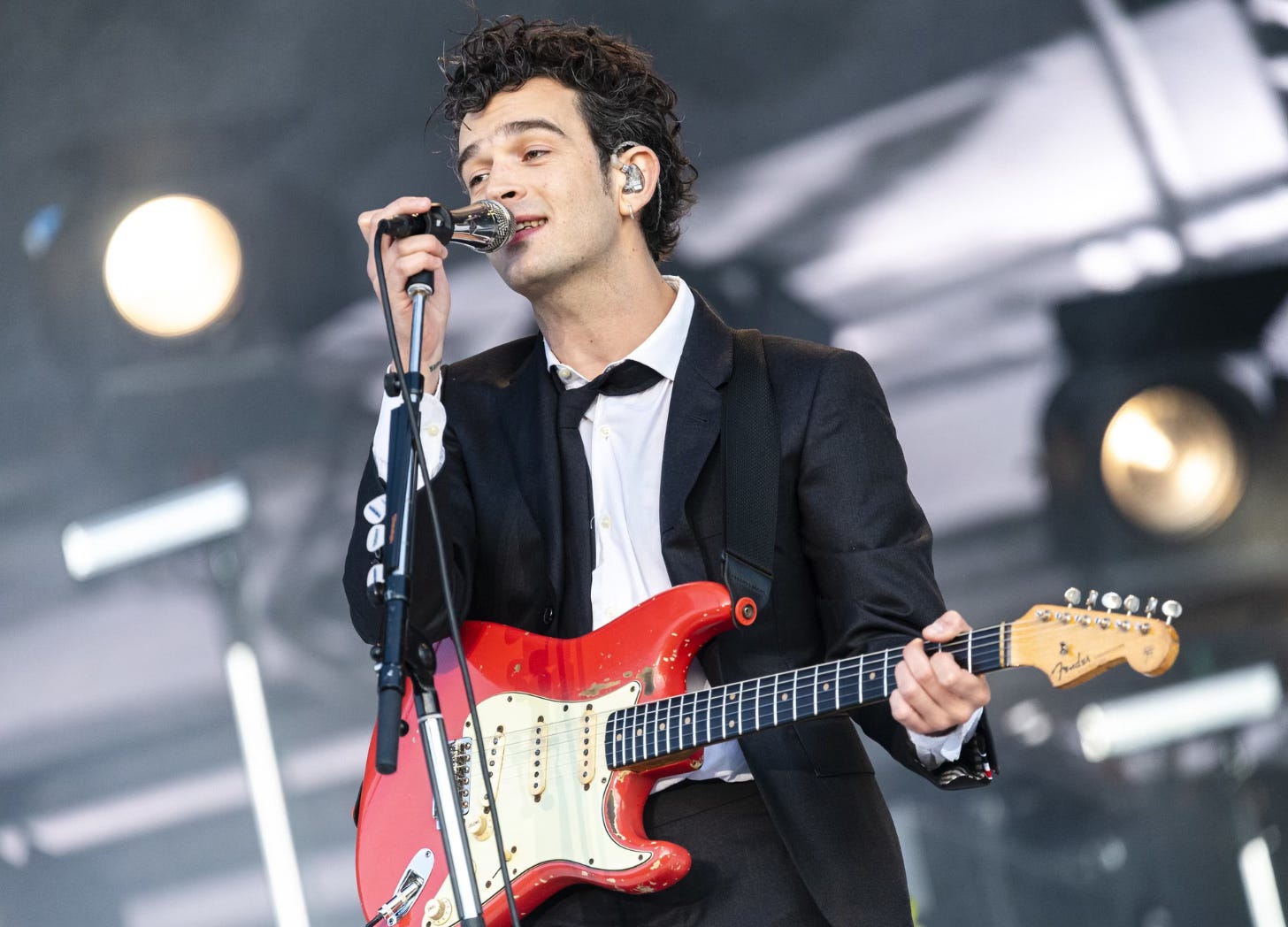Women are dominating music. So why are festival lineups still full of men?
Female artists are either overlooked, too big, or set up to underperform.
The 2025 Grammys made it impossible to ignore: Beyoncé finally won album of the year. Doechii became the third woman ever to win Best Rap Album. Performances from Chappell Roan, Charli XCX, Raye, Sabrina Carpenter, Billie Eilish, Lady Gaga, and Cynthia Erivo confirmed what fans already knew: women aren’t just keeping up. They’re leading.
Women have been making the most exciting and commercially successful music in recent years, but if you’re heading to any UK festivals this summer, you might have noticed that lineups just aren’t reflecting that.
I’ve been going to festivals every summer since my first in 2016, and I’ve now seen more than 150 different artists. But I have never seen a female headliner. One analysis found that 63% of acts booked at UK festivals in 2024 were male solo artists or all-male bands. Just 21% were female artists or all-female bands.


Glastonbury 2024 looked like a step forward: two female headliners, after an all-male top bill in 2023, and only four female headliners in the two decades before that. But even then, SZA’s Pyramid Stage crowd was noticeably smaller than Coldplay’s the night before. Some blamed her for not having “the pull”, which plays into the tired idea that women are a “risk” for top billing.
But the day before, SZA had played to an impressive 65,000 fans at BST Hyde Park. The difference? Glastonbury put her on during the Sunday night exodus, with major stage clashes. That’s not bad demand. That’s bad scheduling.
And that’s the point, it isn’t just about who gets booked. It’s about how they’re booked. Poster placement, time slots, and stage size. They all affect who shows up, how the media covers it, and whether an artist’s career leaps forward or stalls. Even an established female act might lose out to say, a male band that has headlined the same festival repeatedly, simply because the band is seen as “safer.”
This year it might be the same story. Three of the today’s most celebrated artists, Charli XCX, Doechii, and Raye, are all on Glastonbury’s 2025 lineup, but not as headliners. Charli and Doechii are even scheduled simultaneously; split crowds, smaller stages.
There are other factors at play too. Some women topping the charts are too big for festivals. When you’re running the highest-grossing tour of all time, like Taylor Swift, a festival slot might not be worth the fee - or the disruption. Artists like Swift and Beyoncé can now sell out stadiums on their own terms, while festival bookings can mean creative compromises, which can be especially important to women’s success in a male-dominated music industry. They don’t need to squeeze into someone else’s schedule or compromise on what their shows look like. That’s a win in many ways, but where does it leave festival-goers?
Related articles
When festivals are able to get female stars, they have to set them up for success.
One blueprint for this is the smaller independent festivals. Dozens signed the Keychange pledge, a promise to hit a 50/50 gender balance for acts by 2022. By early 2023, about two-thirds had done it. Strawberries & Creem reached a 60% female and non-binary lineup by building diversity into the booking process from day one. As their co-founder put it, “We didn’t struggle to book high-profile women - we prioritised it.” What was once an afterthought is becoming part of the brief.
And - surprise surprise - including women in programming roles helps. Joint analysis from A2D2 and FACTS found that festivals with female artistic directors had more gender-balanced lineups.
And of course, big artists have the power to make change. Matty Healy, the frontman of this year’s Glastonbury headliners The 1975, has said: "If you want to play festivals that have a balanced lineup, don’t play festivals that don’t."
Female artists aren’t a risk. They can bring the crowds. They can deliver the moments. They just need the slot - and the support - to prove it.







